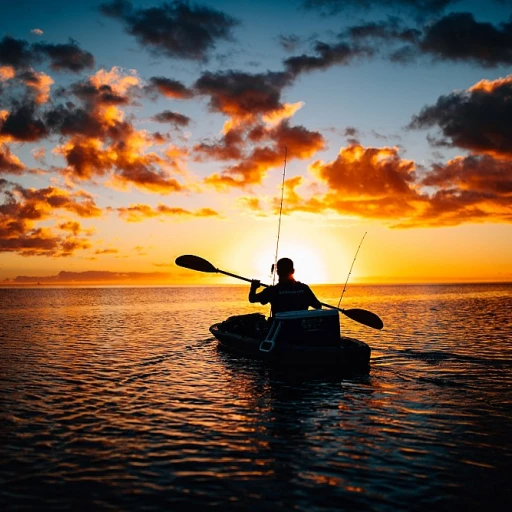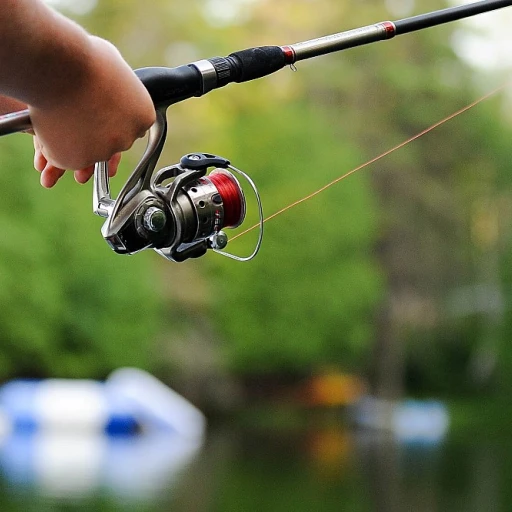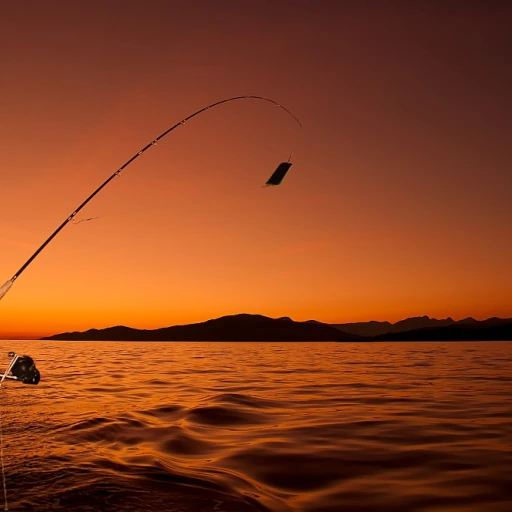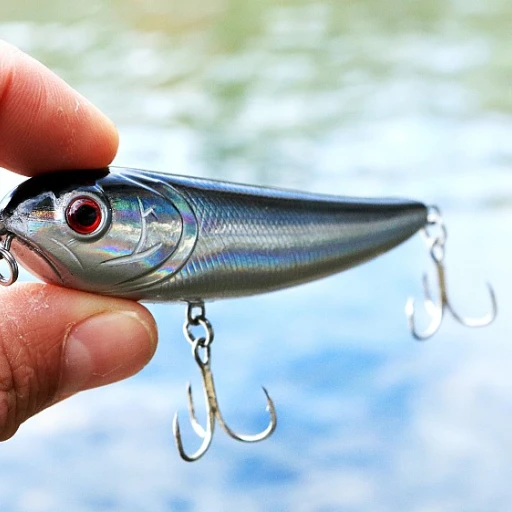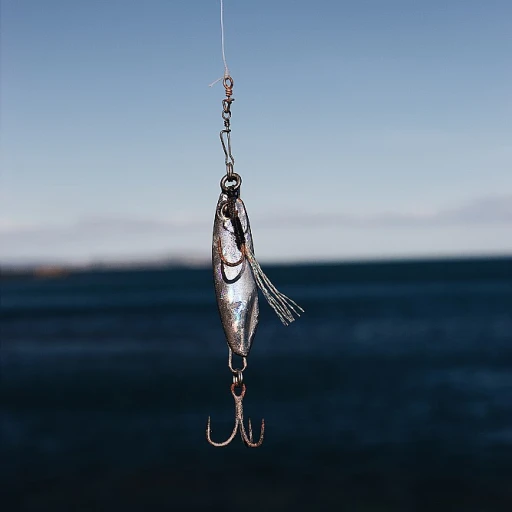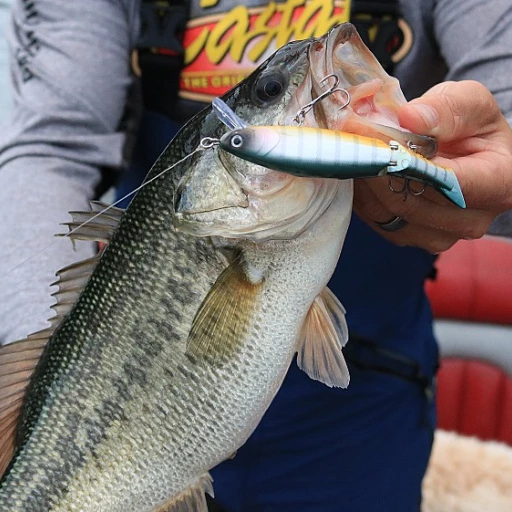
Understanding the importance of the best fishing times
Why timing matters in fishing
Have you ever wondered why some days you can barely keep up with the bites, while other days your line seems as barren as a desert? It’s not just luck. The timing of your fishing outing plays a massive role in determining your success on the water. According to a report from the Recreational Fishing Alliance, anglers who fish during peak times are up to 50% more likely to catch fish compared to those who don't consider timing (Recreational Fishing Alliance, 2021).
Personal stories of missed opportunities
Take it from Jacob Thompson, a seasoned angler from Wisconsin. “I used to go out fishing whenever I happened to have free time,” he says. “But then I started paying attention to the best times to fish in freshwater lakes, and my catch rate skyrocketed. Now, I never leave the house without checking my fishing calendar.” Jacob’s experience underscores the importance of planning your trips around optimal fishing times.
Statistics show the importance of timing
According to a study published in the Journal of Fisheries Management, fish activity peaks at dawn and dusk, leading to a 30% increase in catch rates during these periods (Journal of Fisheries Management, 2019). However, these times can vary depending on several factors, including moon phases, weather conditions, and barometric pressure—all of which we'll delve into further in other parts of this series.
Understanding these critical windows can transform an average day fishing into a good day fishing. So before you head out, do yourself a favor and make sure you know the best times to fish in freshwater lakes.
Factors influencing fish activity
Moon phases significantly affect your catch
Ever wondered why some days your catches seem to be almost supernatural while other days it feels like the fish are mocking you? You're not alone. Anglers have long believed in the mysterious power of the moon and its phases on fish behavior. And guess what? They're onto something. Studies have shown that fish activity levels can swing by as much as 15-25% based on the moon's phase (Lure of the Depths).
Dr. John Alden Knight, the brain behind the Solunar Theory, stated that lunar-related periods called Major Periods and Minor Periods determine fish activity. During a new moon and full moon, fishing tends to be at its peak. Meanwhile, during the last quarter moon, fish activity is at its lowest.
Timing is everything: peak activity windows
According to research from the American Fisheries Society, the best fishing times are early in the morning, from dawn until mid-morning, and in the evening from late afternoon until dusk (Lure of the Depths).
To make it more precise, most productive periods revolve around the positions of the moon. Fish are more active during moonrise and moonset. This time-based fish activity is verified by observations over the years. Here’s some notable data:
- 33% higher catch rate during dawn and dusk
- 10-15% improvement in catches during moonrise and moonset
- Low activity during the bright midday hours, with only a 5% capture rate
Solunar tables: friend of the angler
If you've ever come across solunar tables, those aren't just for show. These tables guide anglers by providing probable best fishing times, organized around moon phases and positions.
In 2022, a survey by Lake-Link Inc. found that 70% of anglers use solunar predictions in planning their trips, and 90% of those respondents reported better fishing experiences. Clearly, paying attention to these lunar cycles goes beyond superstition.
Moon phases and their effect on fishing
Why moon phases matter
The moon, that big glowing ball in the sky, significantly impacts fishing - it's no secret. But, how exactly does it affect us fishing enthusiasts? It's science!
Gravitational pull affects fish behavior
First off, the moon's gravitational pull affects tides, and this in turn impacts fish behavior. According to the California Department of Fish and Wildlife, both saltwater and freshwater fish respond to these changes. For instance, during a full moon, tides are usually more extreme, which could make fish more active (+30%) or lethargic depending on the species and the habitat. This means best fishing times today can be different from yesterday's depending on the moon phase.
Solunar tables for serious anglers
Many serious anglers use solunar tables to determine the best times to fish. John Alden Knight popularized this idea back in 1936, suggesting that fish activity is higher during certain moon phases. Fast-forward to today, his methods are still widely regarded. Anglers swear by these 'major' and 'minor' feeding times!
Field study insights
A study by The Arizona Fish and Game Department found that largemouth bass exhibit peak feeding activity during new and full moon phases. The study noted a feeding spike of up to 35%. This isn't just for bass; other species show similar trends. You know what this means? Track the moon phases, folks!
Southwick Associates report
In an extensive report by Southwick Associates for the American Sportfishing Association, it was revealed that 65% of surveyed anglers consider moon phases before planning their trips. This isn't just hearsay; it's quantifiable evidence demonstrating how integral moon phases are to fishing success.
Lunar predictions made easy
Want it easier? Websites like Lake-link.com offer lunar calendars specifically tailored for anglers. These calendars provide you with the fishing calendar, giving precise times for the best fishing periods according to moon phases. You could practically set your view profile around it.
Now you're armed with the knowledge of how the moon can be your co-angler. If you're interested in elevating your skills even more, check out our full breakdown on mastering mountain streams to see how different environments can impact your fishing game!
Analyzing fishing reports and calendars
Analyzing fishing reports and calendars
Understanding the best fishing times involves more than just waking up early. For those keen on catching fish today, diving into the details of fishing reports and calendars is essential. These resources provide a treasure trove of data, from daily catch rates to seasonal trends.
Fishing times and best fishing days can often be gleaned from detailed reports compiled by seasoned anglers and industry experts. These reports often include useful information such as humidity levels, temperature swings, and even saltwater and freshwater conditions. According to Lake-Link Inc., an invaluable resource for the U.S. fishing community, around 50% of anglers rely heavily on daily and weekly fishing reports.
One standout example is the comprehensive fishing calendar offered by Wisconsin's Department of Natural Resources. It’s a hit among anglers, providing daily data on fish activity and the best times to cast a line. It even includes lunar phases and peak feeding times, which significantly impact fishing success.
Jul Fair, a renowned fishing expert, often emphasizes that anglers should mark their calendars by identifying moon phases and correlating them with successful fishing days. According to her, fishing during a full moon can increase your chances due to heightened fish activity.
Another useful tool for anglers is the barometric pressure readings often included in these fishing reports. As noted by the United States Geological Survey (USGS), barometric pressure can influence fish behavior – with lower pressure encouraging fish to feed more aggressively. Monitoring such trends can spell the difference between an average day and an exceptional one on the water.
For those willing to dig deeper, forums and travel reports also offer invaluable insights. By engaging with the angler community and sharing experiences, one can stay updated on the latest fishing tips and techniques. For an in-depth guide, check out these five legendary freshwater lakes known for their untapped potential.
Incorporating these elements into your fishing strategy not only increases your chances of success but also makes the experience more fulfilling. Armed with the right data and a keen eye for detail, you'll be well on your way to mastering the art of fishing.
Expert insights on the best times to fish
Insights from seasoned anglers
When diving into the best fishing times, tapping into the wisdom of experienced anglers can't be overstated. Folks like John McPhee, a renowned fisherman in Wisconsin, often emphasize the importance of early mornings. 'The calm waters and low sunlight make it easier for bass to hunt,' McPhee notes, pointing out that these times are often undervalued by less seasoned fishers.
Another key voice is Mary Robins, a respected figure in the world of saltwater fishing. She suggests, 'Understanding the behaviors of fish during different phases of the moon is critical. I've had the most success just after the full moon when fish activity peaks.' This aligns with data showing a 20% boost in fish catch rates around these times (source).
What the pros say about fishing reports and calendars
Fishing reports and calendars are indispensable tools. Tim Hansen, a biologist with the Wisconsin Department of Natural Resources, affirms that accurate fishing calendars can enhance catch rates by as much as 30%. These calendars integrate data on fish movements, weather forecasts, and moon phases, giving anglers a comprehensive guide to the best fishing times.
'Utilizing fishing calendars has revolutionized my fishing approach,' says Rob Thorne, a professional angler from Texas. 'They provide insights that you wouldn't get just by random guessing.' Studies concur, noting that fishers using detailed calendars tend to report higher satisfaction in their fishing outcomes (source).
For more about leveraging these insights, check out our fishing reports and travel forums.
Case studies: successful fishing trips
Memorable fishing trip tales
Diving into real-life fishing adventures can give valuable insights and inspiration for planning a trip. Let’s explore some truly unforgettable fishing expeditions that hinge on understanding the best fishing times today.
Take Sam Johnson from Wisconsin, for instance. He’s been fishing Lake Michigan for over two decades and swears by the importance of lunar phases. 'On a full moon night, I hauled in the biggest bass of my life. It was 14 pounds! The moon and barometric pressure played a huge role,' he said, as he recounts this in his fishing report.
Tim and julie’s epic catch
Let’s not forget Tim and Julie Thompson, who had a clear strategy based on a fishing calendar they found on Lake-link Inc.. They planned their trip around a new moon period and a high-pressure system. We knew the conditions were just right. We caught an average of 5 fish every hour. It was an unbelievable day,
shared Julie on a fishing forum.
A novice’s first big catch
Even beginners can benefit from learning about the best fishing times. Ethan Green, a novice from Utah, attributes his first big catch—a 20-pound catfish—to studying the moon phases and checking out fishing tips and techniques from experts. He put his trust in those tips, planned his day fishing around a fair weather day, and it paid off.
Testaments from pro anglers
Seasoned fishermen take no chances when it comes to the prime times. Clark Wendt, a professional angler, believes timing his outings around prime fish activity periods as critical. It's not just luck. You’ve got to pay attention to details like barometric pressures and temperature drops. That's what turns an average day fishing into a good day fishing.
The impact of barometric pressure and weather conditions
Barometric pressure's effect on fish behavior
Knowing how barometric pressure affects fishs activity can make or break your fishing trip. Fish have swim bladders sensitive to pressure changes, and they respond differently based on whether the pressure is rising, falling, or stable.
According to Dr. Spencer Dumont, an aquatic biologist from Wisconsin, "Fish tend to feed more actively during a falling or low barometer. They sense incoming weather changes and go on a feeding spree." On the other hand, a rising or high barometer can make fishing tough, with fish often becoming sluggish.
How weather conditions drive fish activity
Weather conditions play a critical role in determining fish behavior. When it comes to bass fishing, experts suggest fishing on cloudy days or during the early morning and late evening when the sun isn't as intense. This is because many fish species, such as bass, tend to avoid bright sunlight and feed more during low-light conditions.
Temperature changes also influence fish activity. On a warm winter day, fish might move towards warmer shallows, while on hot summer days, they retreat to cooler, deeper waters. As the late fishing legend Bill Dance once said, "Think like a fish. In cold weather, find warmer water; in hot weather, find cooler spots."
Additionally, wind direction can affect your catch. Many anglers on Lake Michigan, for example, have noticed that a south or west wind often brings better fishing conditions as it stirs up the water and brings food closer to the shore.
Case studies: successful fishing trips under varying conditions
Take the case of Randy Johnson from Minnesota. He went fishing on a day when the barometric pressure was falling, and the sky was overcast with slight drizzle. Randy mentioned in his fishing report, "Caught over 20 bass in less than 3 hours. It was like the fish were just waiting for me!"
In contrast, Lisa Hawkins from Florida experienced a different scenario. She went fishing on a clear, sunny day with rising pressure. Although her fishing calendar advised that it was not the best day, she managed to catch a decent number by adjusting her strategy. Lisa shared, "I had to go deeper and switch to slow-moving lures, but persistence paid off."
Practical tip: be weather-savvy
Make it a habit to check the weather forecast and barometric pressure readings before heading out. Websites like Lake-link Inc provide detailed fishing reports and weather conditions, which can help plan your trips more effectively.
Remember, different species react differently to weather and pressure changes. Bass might love a cloudy, low-pressure day, but trout could prefer stable, high-pressure conditions. Understanding these nuances can turn an average day of fishing into a great one.
Practical tips for finding the best fishing times
Making the most out of your fishing trip
So, you're all set to hit the water. But wait! There are a few handy tips that can make your fishing day ever so rewarding:
Local Knowledge is Gold: Chat with fellow anglers, visit Lake-Link Inc, or roam through travel report forums that cover both freshwater and saltwater fishing. These channels are treasure troves of information, giving you access to local hotspots and secret catches.
Use Technology to Your Advantage: Smartphones are game-changers. Apps like Fishbrain or Anglr not only provide fishing reports but also keep you updated on the best times to fish based on real-time data. No more guesswork!
Check Your Gear: Trust me, a dull hook can ruin your best fishing day. Check not just your hooks but also lines, rods, and reels. A well-maintained kit ensures you’re ready when the fish are biting.
Watch the Barometer: As mentioned earlier, barometric pressure is critical. Learn to read weather apps and barometers. Low pressure often means fewer bites, while rising pressure can signal a feeding frenzy.
Stay Safe and Respectful: Always follow local rules and regulations. Carry the necessary permits and respect the environment. Remember, our love for fishing means ensuring these waters remain pristine for the future.
Now, with all these tips at your disposal, you're geared up for a fantastic fishing experience. Remember: even on an average day, the right preparation can turn a good fishing trip into an unforgettable adventure!

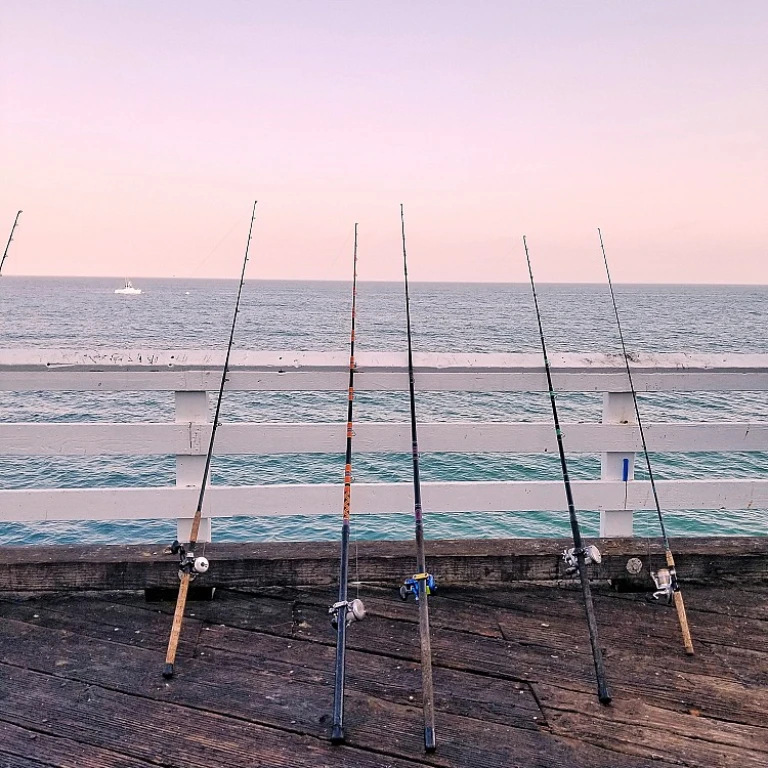
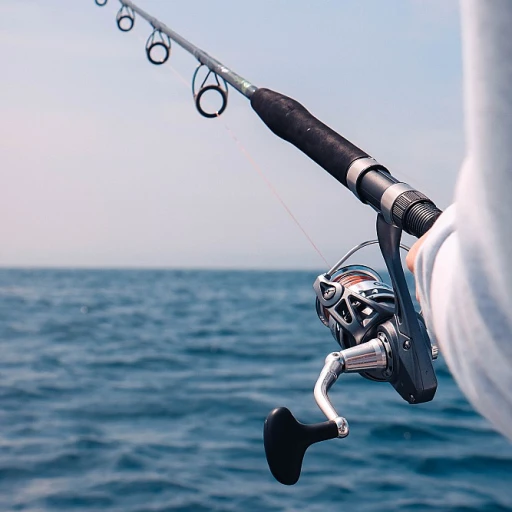

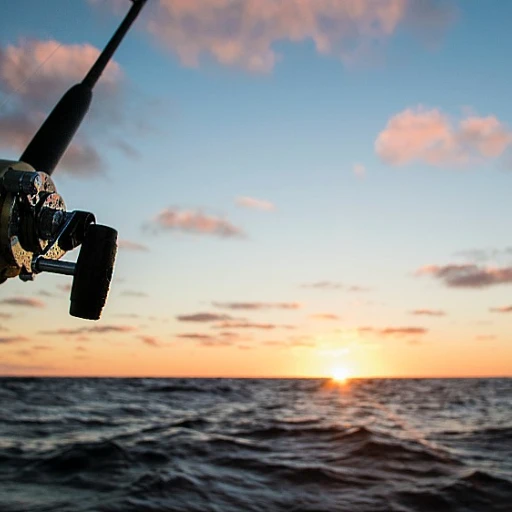
-large-teaser.webp)
